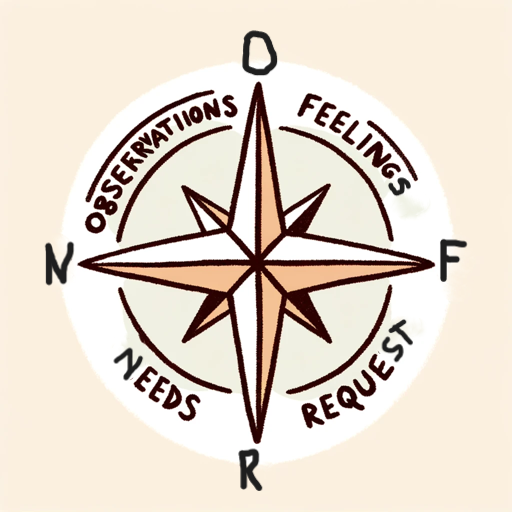Semantic Kernel Wingman-AI-powered semantic kernel assistant.
AI-enhanced app development made easy.
Related Tools
Load More
Texting Wingman
Your wingman for sending attractive texts.

Linguistics Insight
Expert in linguistics, focusing on theories, syntax, and semantics.

Botpress Wingman
An Advanced AI Assistant for Botpress Users

Code Wingman
The World's leader in Software Engineering, Artificial lntelligence, Cloud Engineering, cybersecurity, Web and Career Development and Best Mentor in the GPT store. Build, Learn, Teach, Research.

Comprehendo Grammar Guide
Versatile English test creator with broad stories and diverse question types to prepare SAT

Text Wingman
Your personal texting wingman for witty and engaging replies.
20.0 / 5 (200 votes)
Introduction to Semantic Kernel Wingman
Semantic Kernel Wingman is a specialized AI tool designed to assist developers in integrating and orchestrating various AI services (like OpenAI, Azure, and Hugging Face) within traditional programming environments, such as C# and Python. The core design purpose is to simplify AI application development by providing tools to manage AI plugins, memory, and planning mechanisms. By doing so, developers can automate complex tasks and create dynamic, AI-driven functionalities. For example, a developer can leverage Semantic Kernel Wingman to automate the generation of marketing reports by using a combination of memory retrieval and AI services to pull data, generate insights, and compile the results into a presentable format.

Key Functions of Semantic Kernel Wingman
AI Service Integration
Example
Integrating OpenAI’s GPT-4 into a Python application using Semantic Kernel’s SDK.
Scenario
In a real-world application, a developer uses Semantic Kernel Wingman to connect OpenAI’s language model to enhance a customer service chatbot, allowing it to provide more accurate and human-like responses.
Plugin Orchestration
Example
Orchestrating multiple AI plugins to automate document processing workflows.
Scenario
A developer automates the handling of incoming emails, extracting key data, summarizing the contents, and categorizing them. Using AI plugins for document parsing, data extraction, and summarization, the workflow becomes fully autonomous.
AI Memory and Planning
Example
Creating a pipeline that uses memory to recall historical data and a planner to generate action steps.
Scenario
A sales team utilizes an AI system built with Semantic Kernel Wingman that automatically recalls previous client interactions and generates follow-up action plans based on customer history and context, saving time and improving personalization.
Target Audience for Semantic Kernel Wingman
Developers and AI Engineers
These users benefit from the tool's ability to integrate AI services seamlessly into their applications, using familiar programming languages. They can create AI pipelines to automate complex tasks, making their software more dynamic and intelligent.
Enterprise Application Developers
Organizations looking to build AI-powered solutions on top of existing software, such as Microsoft 365 or CRM systems, will find value in Semantic Kernel Wingman’s orchestration features. It allows them to enhance productivity tools with cutting-edge AI capabilities without needing to overhaul existing infrastructure.

Guidelines for Using Semantic Kernel Wingman
Visit aichatonline.org for a free trial without login.
You can get started with Semantic Kernel Wingman by visiting the site and using its features without needing to log in or pay for a subscription, including ChatGPT Plus.
Set up necessary development tools.
Ensure you have access to development tools like Visual Studio Code and install the necessary SDKs for C# or Python. You will need API keys from services like OpenAI or Azure OpenAI.
Familiarize yourself with core concepts.
Learn about the orchestration of AI plugins, AI memories, and planners. Go through detailed tutorials on using the Semantic Kernel SDK to integrate AI with your applications.
Start using out-of-the-box plugins or create your own.
Use available plugins for tasks like email automation, memory management, and content summarization. You can also create custom plugins to suit your specific needs.
Test and deploy your applications.
Once your AI services are integrated, test them in your local environment and then deploy them on platforms like Azure for wider usage. Join the community for support.
Try other advanced and practical GPTs
Game Idea/Mechanic Generator
Unleash Creativity with AI-Powered Game Mechanics

Dark Romance Scribe GPT
AI-powered dark romance storytelling.
Poker GBT by PokerXFactor.com
AI-Powered Poker Strategy Insights.

Digital Product Brainstorm
AI-driven digital product ideas tailored to your niche.

Travel Agent ✈️🌎sharpTravel
AI-Powered Travel Planning Made Easy

실시간 코인, 암호화폐 정보
AI-Powered Real-Time Crypto Insights

한국 최저가 쇼핑 검색 - 네이버, 쿠팡, 11번가, 지마켓, 신세계, 롯데 가격 비교
AI-powered lowest price finder

Toronto DUI - Criminal Defence Lawyers Toronto
AI-powered DUI legal support in Toronto

AI photo generator
AI-Powered Image Generation

직장인을 위한 보고서 작성하기 (Word 다운로드)
AI-Powered Reports for Professionals

Deep talk with Sam Altman
AI-Powered Insights, Inspired by Sam Altman

Compass NVC
AI-powered guide for empathetic dialogue.

- Task Automation
- Plugin Creation
- Memory Management
- Code Integration
- AI Orchestration
Common Questions About Semantic Kernel Wingman
What is Semantic Kernel Wingman?
Semantic Kernel Wingman is a customized AI assistant designed to help developers integrate AI services such as OpenAI, Azure, and Hugging Face into their applications using the Semantic Kernel SDK.
How does Semantic Kernel Wingman simplify AI plugin orchestration?
Wingman streamlines the orchestration process by offering out-of-the-box support for plugins and allowing developers to chain native code with AI models. It simplifies the execution of AI tasks like memory storage, language generation, and planning.
Can I build and deploy my custom AI plugins?
Yes, you can create custom plugins using Semantic Kernel Wingman and deploy them across multiple platforms, including ChatGPT, Microsoft 365, and Azure, following OpenAI plugin standards.
What programming languages are supported?
Semantic Kernel Wingman currently supports C# and Python. However, support for other languages like JavaScript and Java is planned for the future.
How can I use planners in Semantic Kernel?
Planners in Semantic Kernel help you automate tasks by creating action sequences using available AI plugins and native functions. You can configure them to dynamically generate workflows for complex operations.